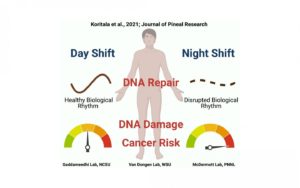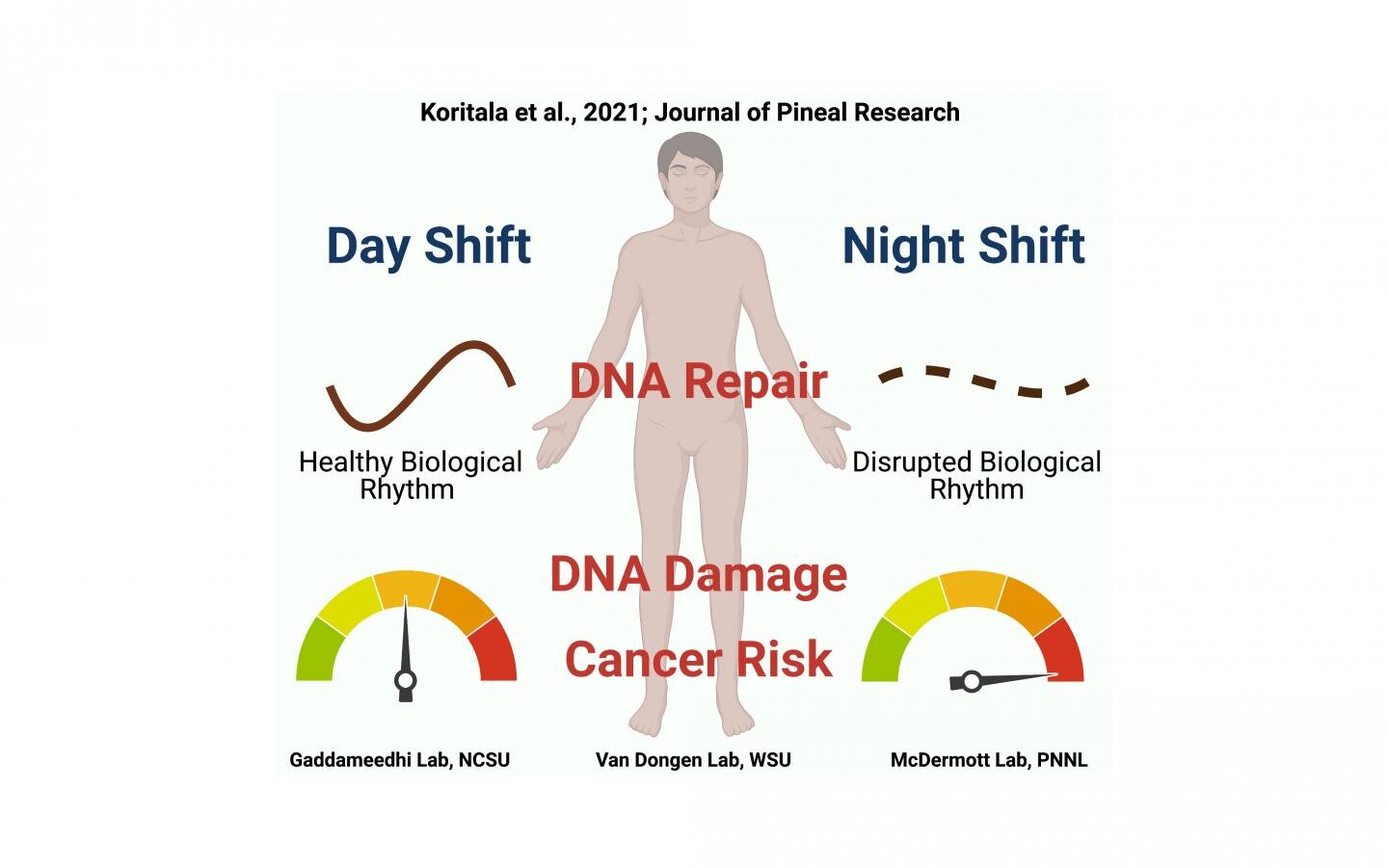Research showed Evidence that cancer is more common in night shift workers
A number of previous studies have linked night shift work with an increased risk of developing multiple health conditions, including high blood pressure and cancer. A new study may explain why working these odd hours may increase a person’s chance of developing cancer, noting that working at night disrupts the body’s internal clock.
New clues about why night shift workers are at an increased risk of developing certain types of cancer are presented in a new study conducted at Washington State University Health Sciences Spokane.
The study, published online in the Journal of Pineal Research, involved a controlled lab experiment using healthy volunteers who had simulated night or day shifts.
Findings from the study suggest that night shifts disrupt the natural 24-hour rhythms in the activity of certain cancer-related genes, making night shift workers more vulnerable to damage to their DNA, while at the same time mistimeing the body’s DNA repair mechanisms to deal with that damage.
While more research needs to be done, these discoveries could one day be used to help prevent and treat cancer in night workers.
“There is mounting evidence that cancer is more common in night shift workers, leading the World Health Organization’s International Agency for Research on Cancer to classify night shifts as a likely carcinogen,” said co-corresponding author Shobhan Gaddameedhi, an associate professor.
formerly with the WSU College of Pharmacy and Pharmaceutical Sciences and now with the Division of Biological Sciences and the Center for Human Health and Environment at North Carolina State University.
“However, it was unclear why night shifts increase cancer risk, which is what our study sought to address.”

Studying the rhythms in genes related to cancer
As part of a collaboration between the WSU Sleep and Performance Research Center and the US Department of Energy’s Pacific Northwest National Laboratory (PNNL), Gaddameedhi and other WSU scientists worked with bioinformatics experts at PNNL to explore the potential involvement of the biological clock, the built-in mechanism that keeps us in a 24-hour night and day cycle.
Although there is a central biological clock in the brain, almost every cell in the body also has its own built-in clock.
This cellular clock includes genes known as clock genes that are rhythmic in their expression meaning that their activity levels vary with the time of day or night.
The researchers hypothesized that the expression of genes associated with cancer might also be rhythmic, and that night shifts might disrupt the rhythmicity of these genes.
To test this, they conducted a simulated shift work experiment in which 14 participants spent seven days in the sleep lab at WSU Health Sciences Spokane. Half of them had a three-day simulated night shift schedule, the other half a three-day simulated day shift schedule.
After completing their simulated shifts, all participants were kept in a constant routine protocol used to study people’s internally generated biological rhythms, independent of external influences.
As part of the protocol, they were kept awake for 24 hours in a semi-recumbent position under constant exposure to light and room temperature and were given identical snacks every hour.
Blood was taken every three hours. Analyzes of white blood cells from the blood samples showed that the rhythm of many of the cancer-related genes was different in the night shift than in the day shift. In particular, genes related to DNA repair that showed different rhythms in the day shift lost their rhythmicity in the night shift.
Next, the researchers looked at what the consequences might be of the changes in the expression of cancer-related genes. They found that white blood cells isolated from the blood of night shift participants showed more evidence of DNA damage than those of day shift participants.
In addition, after the researchers exposed isolated white blood cells to ionizing radiation at two different times of the day, cells irradiated in the evening showed increased DNA damage on the night shift compared to the day shift.
This meant that white blood cells from night shift participants were more vulnerable to external damage from radiation, a known risk factor for DNA damage and cancer.
Taken together, these findings suggest that night shift schedules are shifting the timing of cancer-related gene expression in a way that reduces the effectiveness of the body’s DNA repair processes when they’re needed most,” said co-corresponding author Jason McDermott, a computational researcher. scientist in the Division of Biological Sciences at the Pacific Northwest National Laboratory.
Potential for better prevention, treatment
The researchers’ next step is to conduct the same experiment with real shift workers who have consistently worked day or night shifts for many years to determine whether the unrepaired DNA damage in night workers builds up over time, ultimately leading to could increase the risk. of cancer.
If what happens in real shift work is in line with current findings, this work could eventually be used to develop prevention strategies and drugs that can address the wrong timing of DNA repair processes.
It could also form the basis for strategies to optimize the timing of cancer therapy so that treatment is delivered when effectiveness is greatest and side effects are minimal, a procedure called chronotherapy, which must be tuned to the internal rhythm of the patient. night workers.
“Night shifts face significant health disparities ranging from an increased risk of metabolic and cardiovascular disease to mental disorders and cancer,” said co-senior author Hans Van Dongen, a professor at WSU’s Elson S. Floyd College of Medicine and director of the WSU Sleep and Performance Research Center.
“It is high time we found diagnostic and treatment solutions for this underserved group of essential workers so that the medical community can address their unique health challenges.
” In addition to Van Dongen, Gaddameedhi and McDermott, the study authors included Bala Koritala, Kenneth Porter, Osama Arshad, Rajendra Gajula, Hugh Mitchell, Tarana Arman, Mugimane Manjanatha and Justin Teeguarden.
